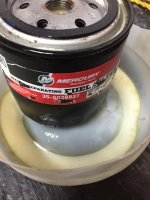moresparks
Regular Contributor
Hi,
Here in the UK we are now having to use E10 Gasoline (10% Ethanol) as opposed to E5.
Is anybody aware of potential problems in using this fuel.?
I have a couple of 1989 Volvo Penta AQ171C's and I have always used Startron gasoline treatment.
I have an aircraft grade Aluminum fuel tank, copper fuel lines to the Fuel Filter / water separator (CAV type). The fuel lines to the engine are nitrile rubber and fairly new.
Should I be worried?
Here in the UK we are now having to use E10 Gasoline (10% Ethanol) as opposed to E5.
Is anybody aware of potential problems in using this fuel.?
I have a couple of 1989 Volvo Penta AQ171C's and I have always used Startron gasoline treatment.
I have an aircraft grade Aluminum fuel tank, copper fuel lines to the Fuel Filter / water separator (CAV type). The fuel lines to the engine are nitrile rubber and fairly new.
Should I be worried?


